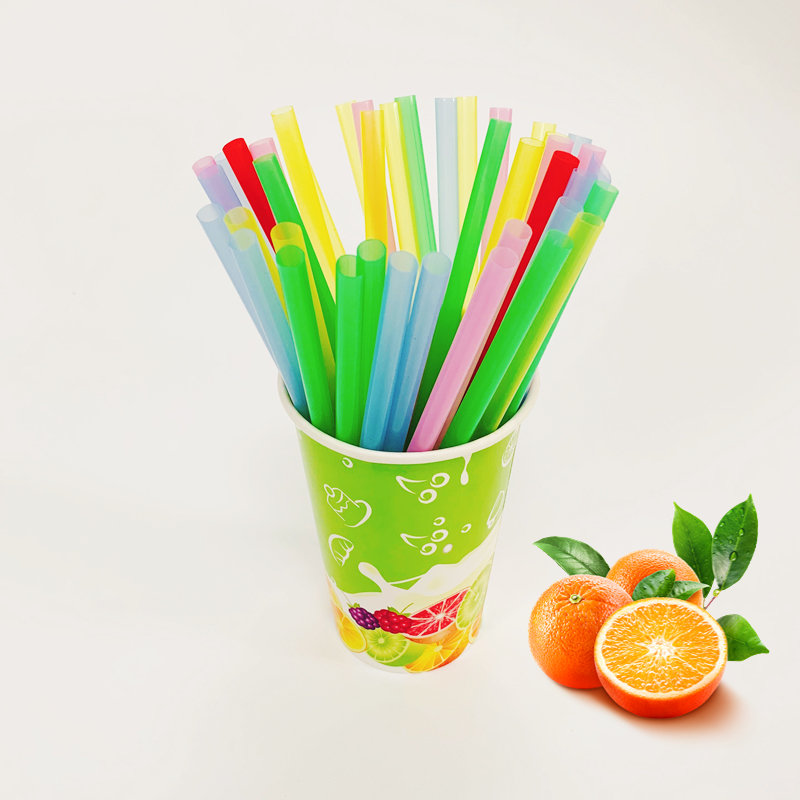
In recent years, there has been a growing concern about the environmental impact of single-use plastic straws. These straws contribute significantly to plastic pollution, leading to harmful effects on marine life and ecosystems. As a response to this issue, PLA biodegradable straws have emerged as a sustainable alternative. This article will delve into what PLA straws are, their benefits, manufacturing process, and their role in reducing plastic waste.
What are PLA Biodegradable Straws?
PLA stands for Polylactic Acid, which is a biodegradable thermoplastic derived from renewable resources such as corn starch or sugarcane. PLA biodegradable straws are made using this bio-based polymer, providing a viable alternative to conventional plastic straws. These straws are designed to break down naturally under specific conditions, reducing their environmental impact significantly.
Benefits of PLA Biodegradable Straws
1. Environmental Footprint
One of the key advantages of PLA biodegradable straws is their reduced environmental footprint. Since they are made from renewable resources and biodegrade over time, they contribute less to pollution and landfill waste compared to their plastic counterparts.
2. Renewable Resource Dependency
PLA biodegradable straws are produced from renewable resources like corn starch and sugarcane. This reliance on natural resources ensures a sustainable supply chain, minimizing the impact on the environment.
3. Biodegradability
Unlike traditional plastic straws that take hundreds of years to decompose, PLA straws break down into organic compounds within a few months under the right conditions. This significantly reduces the accumulation of waste in landfills and oceans.
4. Reduced Carbon Emissions
Producing PLA biodegradable straws requires fewer fossil fuel resources and emits fewer greenhouse gases compared to conventional plastic straws. This reduction in carbon emissions plays a vital role in combating climate change.
5. Safe for Consumption
PLA biodegradable straws are food-safe and non-toxic, making them an ideal choice for both personal and commercial usage. They do not release harmful chemicals when in contact with hot or cold beverages, ensuring a safe drinking experience.
The Manufacturing Process
The production of PLA biodegradable straws involves several steps, including:
1. Extraction of Raw Materials
The raw materials used for PLA production, such as corn starch or sugarcane, are harvested and extracted from renewable sources. These materials undergo processing to extract the required polymers.
2. Polymerization
After the extraction process, the extracted starch or sugarcane goes through a process called polymerization. This process involves breaking down the starch or sugarcane into simple sugars, which are then fermented using specific bacteria to produce lactic acid.
3. Polymer Formation
The lactic acid is purified and converted into lactide, a cyclic ester. This lactide monomer is then polymerized to form long chains of polylactic acid, which is the main component of PLA.
4. Production of PLA Biodegradable Straws
The polylactic acid is melted and extruded into thin tubes to create PLA straws. These tubes are then cut into the desired length and shape. The straws undergo quality checks to ensure they meet the required standards before packaging and distribution.
Role in Reducing Plastic Waste
The widespread use of PLA biodegradable straws has the potential to significantly reduce plastic waste and its harmful effects on the environment. By choosing these eco-friendly alternatives, we can:
1. Minimize Landfill Waste
Since PLA biodegradable straws break down naturally over time, they contribute less to landfill waste compared to traditional plastic straws. This decreases the strain on landfills, allowing for a more sustainable waste management system.
2. Prevent Ocean Pollution
Plastic pollution poses a severe threat to marine life and ecosystems. PLA straws, on the other hand, decompose into harmless organic compounds, minimizing the impact on oceans and marine creatures.
3. Encourage Sustainable Practices
By choosing PLA biodegradable straws, individuals and businesses can demonstrate their commitment to sustainable practices. This sends a powerful message and encourages others to make environmentally conscious choices as well.
4. Drive Innovation
The demand for sustainable alternatives like PLA straws drives innovation in the packaging and food service industries. This, in turn, leads to the development of new technologies and materials that further reduce plastic waste and promote sustainability.
Conclusion
PLA biodegradable straws offer a sustainable solution to the plastic pollution problem caused by single-use plastic straws. With their reduced environmental footprint, reliance on renewable resources, biodegradability, and minimal carbon emissions, these straws pave the way for a greener future. By choosing PLA straws, we can actively contribute to reducing plastic waste and preserving the health of our planet. It’s time to make a conscious shift towards sustainable alternatives like PLA biodegradable straws and take a responsible approach to our daily choices.
